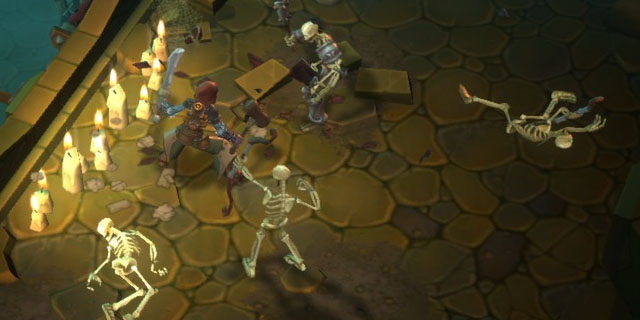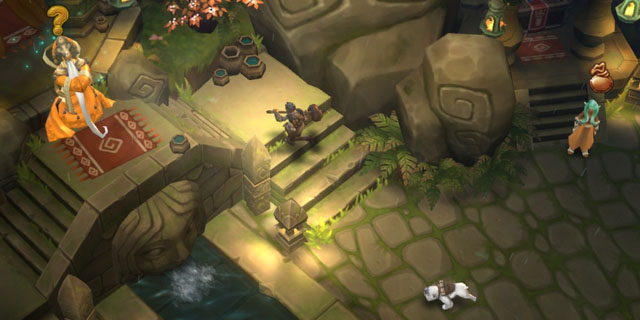
Some considered the original Torchlight the “next” Diablo, with all of its similarities to the first game in that series. If so, many will still draw that same comparison between Torchlight II and Diablo II, as this comparison remains accurate. That isn’t to say Torchlight II doesn’t stand on its own, but knowing its fanbase, the game delivers just what people expect from it.
The first thing to notice is that everything is bigger. There are more areas, some of them large outdoor zones, and more things to explore. The cast of NPCs is also greatly increased, and not limited to the town areas. Often you will encounter events and NPCs either fighting against enemies or needing help. While these don’t add to any overall storyline, it helps break up what would otherwise just be endless monster hordes.

The gameplay is, of course, relatively unchanged from the first Torchlight, save for differences due to new playable classes. Each class has three trees from which to choose skills from, and each skill has three tiers that change it based on the number of points invested. This serves to encourage specialization, though a re-spec system allows players to change their minds and change the last three skill points for a price. The game’s mod community has modded in ways to fully re-spec a character as well.
Loot is still a large part of the game, but its management is made far easier than many games in its genre. Loot still drops all over the place, and it is still a loot-driven game with items driving most of your character stats. As in the first game, you have the ability to send your pet into town with a full inventory to sell it. This eliminates much of the back-and-forth required in many games in the genre, as your inventory doesn’t become as much of an issue. The other factor here is the removal of identify scrolls for most items; some items will often automatically identify at certain levels, and only rare items require an identify scroll. This removes the need to micromanage your inventory, instead being able to simply dump any items your character does not use into your pet’s inventory for selling. Loot management still needs to be done, but Torchlight II streamlines and speeds up the whole process.
Torchlight II allows for online co-op for up to six players. Each player in a co-op game sees their own loot, removing the often contentious problem of greedy players snapping it up and refusing to share. Enemy strength scales based on the number of players present. Torchlight II also allows for LAN play, though as with many PC games, it’s lacking local co-op. While the online play suffered from a few issues at launch, Runic quickly worked to fix the problems, and the game was fully playable offline (with the possible exception of Steam activation on the first run). Offline play has become a bigger topic recently among PC games, with the advent of online services such as Blizzard’s Battle.net and Ubisoft Uplay often requiring a connection at all times.
Runic did what it needed to with Torchlight II while messing with the original’s formula as little as possible. The result is a comfortable joy.
Pros: More Torchlight is a great thing, streamlined loot system
Cons: Story is a bit weak, not much innovation



















